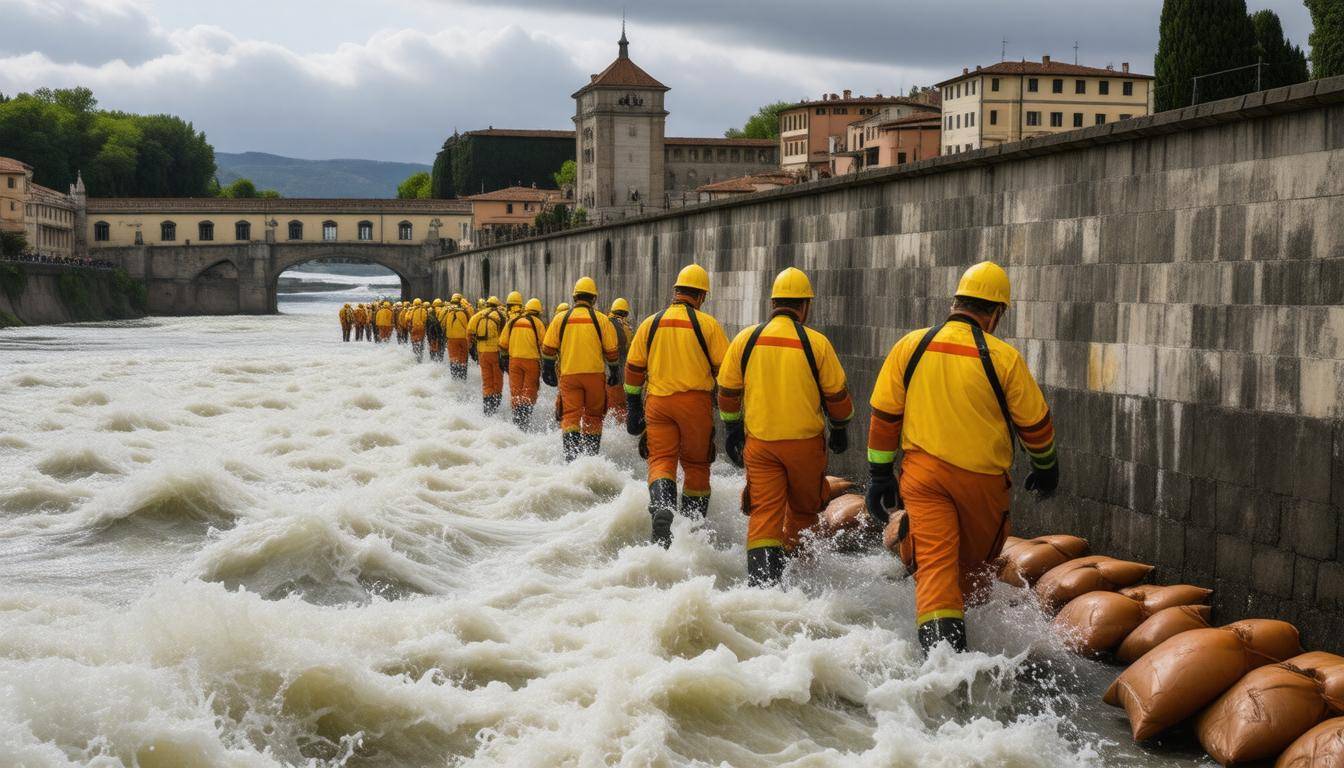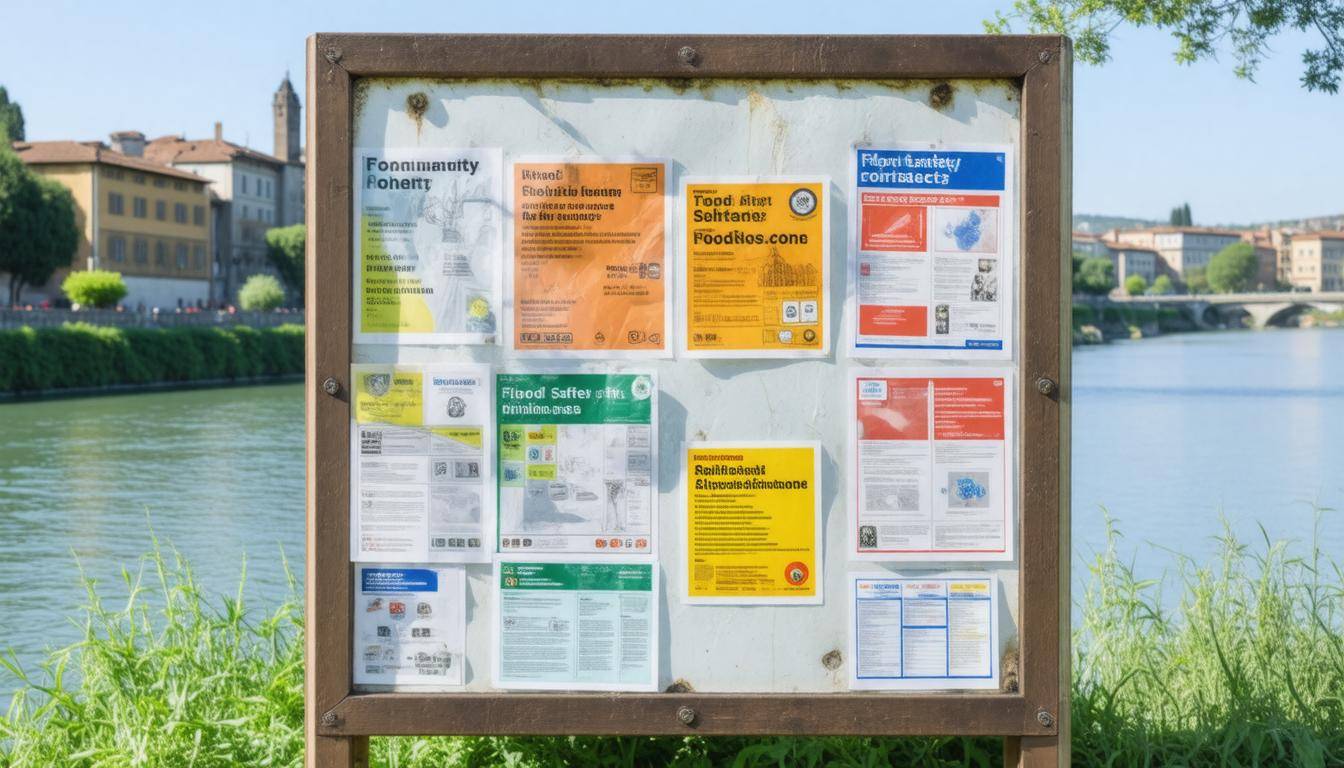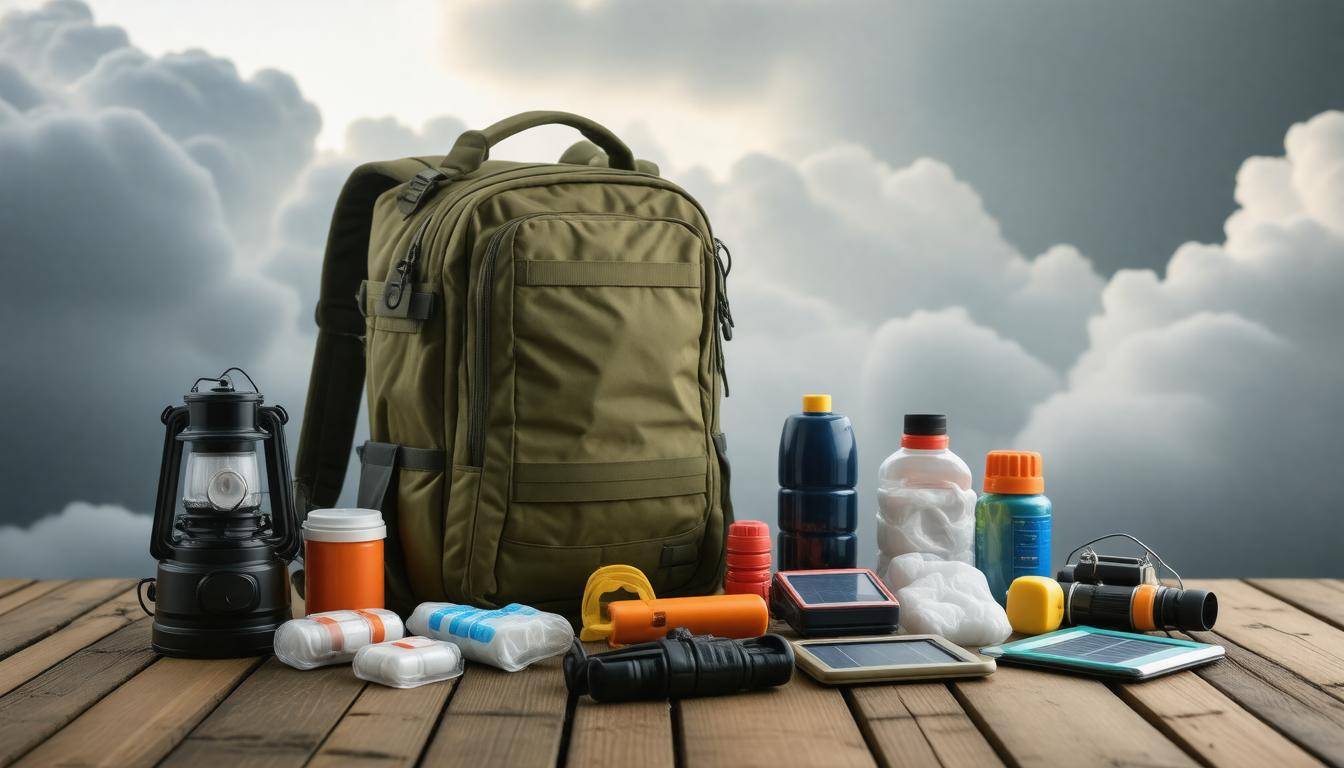Living near the Arno River can be both beautiful and risky. The sound of flowing water and picturesque views are part of Florence’s charm, but they also bring the threat of sudden flooding. As heavy rains become more common due to climate change, it’s vital for residents to understand how to protect themselves and their homes. This guide will help you navigate flood safety with practical tips, from preparing emergency kits to knowing your evacuation routes. You’ll find that being ready doesn’t have to be overwhelming; with some straightforward information and a little planning, you can feel more secure when the rain comes pouring down.
It is crucial for residents and visitors near the Arno River to stay informed about weather conditions, especially after heavy rain, as flooding can occur suddenly. Preparing an emergency kit with essential supplies and having an evacuation plan in place are recommended steps to enhance safety during potential flood situations.

Identifying Vulnerable Areas in Florence
In Florence, recognizing vulnerable areas isn’t just an academic exercise—it’s a matter of safety and preparedness. The historic city center, with its charming architecture, is often at the mercy of the rising Arno River. Particularly near the iconic Ponte Vecchio, where visitors marvel at the view, the ground dips low, creating a natural reservoir for water during heavy rains. Similarly, neighborhoods like Santa Croce and San Frediano have their own challenges, being nestled close to the riverbank and making them prime candidates for flooding. Residents in these areas need to be particularly vigilant.
According to a recent flood risk report by the Municipality of Florence from 2024, an alarming 15% of Florence’s buildings fall within what authorities classify as high-risk flood zones. This figure highlights the urgent need for residents to understand their geographical risks and recognize that many homes have historically borne the brunt of repeated floods. Numerous reports document flooding events in these areas stretching back decades. With extreme weather patterns becoming ever more frequent and unpredictable, the potential for renewed flooding only intensifies.
It’s vital for residents to gather knowledge about these risks so they can prepare effectively. Regular community meetings can serve as platforms for discussing historical flood data and sharing insights on personal readiness strategies. Plus, maintaining open channels of communication with local authorities ensures that when storm warnings are issued, you’re always one step ahead.
Keep in mind that awareness goes beyond merely knowing where the risks lie; it’s about taking actionable steps to fortify your home against possible flooding.
Equipped with this information, residents should take proactive measures to mitigate potential damage. This includes elevating crucial components like electrical systems and utilizing sandbags or other barriers during anticipated storms. Making informed decisions based on historical trends—and not just reacting after a disaster—is key.
As we shift our focus from understanding the challenges posed by flooding towards implementing specific strategies, it becomes crucial to consider how best to shield your living spaces from such threats.
Preparing Your Home for Floods
Taking preemptive measures can drastically reduce flood damage. One vital step in this process is elevating your electrical systems. Even the smallest amount of water can lead to catastrophic failures in wiring and appliances. Homeowners should elevate their appliances, such as washing machines and heaters, above expected flood levels. Ideally, place these items on platforms or shelves at least 12 inches high. For those with basements, it becomes even more crucial to relocate or secure any electronics and other valuables situated at ground level, because the last thing you want is a flooded basement leading to significant repairs.
Maria Rossi, a resident who experienced the 2019 flood, shared her lessons learned: “Elevating our heater and washing machine saved us thousands in damages, BUT it was the proactive steps we took that really made a difference.” This personal story underscores the critical importance of forward-thinking preparations.
Step I – Installing Flood Barriers
Next, consider installing flood barriers around your property. Sandbags are the most common option, but there are also permanent barriers that can be installed with professional help. A study by the University of Florence indicates that homes with installed barriers suffer up to 60% less damage when flooding occurs.
- Sandbags provide an immediate and relatively inexpensive solution.
- Permanent barriers require more investment but offer robust protection for years to come.
- Make sure they are positioned to direct water away from the foundation of your home.
Moving on from barriers, let’s discuss important interior solutions.
Step II – Installing Sump Pumps
If your home has a basement, installing sump pumps can be one of the best defenses against flooding. These pumps are designed to remove groundwater that may accumulate during heavy rains or floods.
Consider investing in a dual pump system with one as a backup that operates on battery power; this way, you’ll still have protection even if there’s a power outage caused by the flood. Regularly check and test your sump pumps to ensure they’re functioning properly throughout the year.
It’s not just about equipment; it’s about having an emergency plan ready for your family as well. This includes establishing evacuation routes and safe meeting spots should a flooding event occur.
By taking these practical steps—elevating electrical systems, installing flood barriers, and equipping your home with sump pumps—you can significantly lower the risks associated with flooding in Florence.
With these preparedness measures in mind, turning our focus toward developing structured plans for emergencies becomes essential for residents living near vulnerable waterways.
Critical Emergency Response Plans
A well-crafted emergency response plan is essential for any household living near the Arno River. Having a straightforward approach can make the difference between safety and panic when floods occur. First and foremost, formulating a communication plan ensures that everyone knows what to do in case of an emergency. It should include a list of important contacts—like family members, neighbors, and local emergency services—and designate a reliable meeting place if you become separated.
Communication Plan
In your communication plan, it’s wise to build redundancy. Think about having backup methods for staying in touch as cellular networks can often fail during emergencies due to heavy traffic or power outages. Consider using walkie-talkies, which don’t rely on cell towers or internet service.
Equally important is utilizing Florence’s Flood Alert System. By signing up with your phone number, you will receive immediate flood warnings directly from local authorities. This quick access to real-time updates gives you a head start in planning your next steps.
Once you’ve established effective communication measures, it’s equally vital to focus on how to get out safely when the time comes.
Evacuation Routes
Mapping out multiple evacuation routes is another core element of your emergency response plan. The Arno River has a history of unpredictability, so it’s best not to leave travel decisions until water levels rise. Familiarize all family members with these routes, especially children, who might feel scared and disoriented during stressful situations.
Consider potential obstacles like flooded roads or other hazards that could obstruct escape routes.
A tip from experience: Practice evacuating once or twice a year to make sure everyone knows how to navigate the routes confidently.
This practice helps create muscle memory and reduces confusion when every second counts during an actual emergency. When choosing your evacuation paths, aim for higher ground and avoid areas known for flooding; informing community members about chosen routes can foster collective safety.
Adequate planning is essential, but actions taken at the governmental level are equally crucial in managing flood risks around the Arno River.
Government Flood Control Efforts
Over the years, local authorities have taken significant strides to improve flood safety through robust flood control measures. One notable initiative is the Arno River basin improvement project, designed specifically to enhance the river’s capacity to manage heavy rainfalls. This focus is not just on maintaining current conditions but on preparing for future climate uncertainties. By deepening and widening certain sections of the river, engineers aim to create a natural buffer against flooding impacts.
Resources have been channeled into building new embankments while reinforcing existing structures. These embankments act as barriers, providing an extra layer of protection for nearby communities. During recent heavy rains, residents noticed how well these reinforcements held up; the controlled flow of water made a noticeable difference in minimizing property damage.
According to government reports from 2023, these flood control measures have effectively reduced potential flood damage by an impressive 30%. This highlights the importance of continuous investment in infrastructure to safeguard citizens’ homes and lives. Yet, despite these advances, challenges remain as climate patterns are growing increasingly erratic; this unpredictability demands adaptive approaches to flood management.
Additional initiatives, such as community awareness programs and early warning systems, have been introduced to complement physical infrastructure improvements. These programs educate residents about local risks and encourage preparedness strategies that can save lives and property when potential threats emerge. Funding has also been directed towards improving drainage systems, ensuring rainwater can flow freely and reduce surface flooding.
However, maintaining these structures requires ongoing assessment and timely maintenance. Periodic checks and repairs become crucial before disasters occur. More than just governmental oversight, community involvement plays a critical role. Residents need to stay informed about local plans and participate in town hall meetings or workshops discussing flood preparedness.
With these efforts established, it’s equally important for individuals to understand what steps they should take during a flood event.
Actions to Take During an Arno River Flood

The Arno River has a history of flooding, and understanding how to respond in the moment can truly make a difference. When flood alerts are issued, your first action should be to move to higher ground without hesitation. While it might seem instinctual to check on property or gather belongings, safety must come first. Remember, just six inches of fast-moving water can knock you off your feet, and two feet can sweep away vehicles entirely.
With your safety in mind, there are several immediate steps you should take. First, ensure that water, gas, and electricity supplies are turned off to prevent any hazardous situations in the event of contact with floodwaters. This simple yet effective action can help avoid further complications later on. Keep an emergency kit ready that includes essentials such as water, non-perishable food, medications, and a flashlight—items that can sustain you for a few days if access to services is interrupted.
Next, listen for updates using a battery-powered radio; this will keep you informed of weather conditions and evacuation procedures as they unfold. Being startled by sudden changes in flood levels is common during emergencies; maintaining awareness can provide some peace of mind during chaotic times. If traveling becomes necessary—as difficult as it may be—do not drive through flooded areas or over bridges, as they could become unstable or collapse under pressure.
Taking these immediate safety steps sets you up for success in emergencies, but think about continuous planning as well; preparing your household for the unexpected really lays the groundwork for minimizing risk in future events.
These actions are not just guides—they’re life-saving strategies rooted in experiences of those who have navigated similar crises before. Collecting vital documents in waterproof containers and having an emergency route mapped out allows you to remain calm amidst turmoil, ensuring you know exactly where to go when every second counts.
Keeping yourself informed and prepared for flooding isn’t merely reactive—it’s proactive safety management that protects your home and loved ones with foresight and knowledge.
As we transition from immediate response measures to long-term preparedness strategies, maintaining an ongoing focus on safety planning can greatly enhance resilience against potential disasters.
Developing a Personal Safety Plan
Having your own safety plan tailored to surging floods is indispensable. For residents near the Arno River, the unpredictable flow and risk of sudden flooding make this planning critical. This isn’t just about surviving; it’s about safeguarding your peace of mind.
Begin by gathering essential supplies in an emergency kit. It should include enough bottled water—approximately one gallon per person per day for at least three days—along with non-perishable food, a flashlight, batteries, first aid supplies, and any necessary medications. Think of this kit as your lifeline; it equips you with what you need in case of a power outage or if you have to leave your home suddenly.
- Emergency Kit: Essentials like water, non-perishable food, and medical supplies.
- Personal Documents: Store critical documents such as identification, insurance papers, and medical records in waterproof containers to protect them from potential flood damage.
- Safety Drills: Conduct regular safety drills with your family to ensure everyone knows the plan and evacuation routes.
The importance of conducting safety drills cannot be overstated. Regular practice instills a sense of preparedness that helps families respond swiftly and calmly during emergencies.
I’ve seen too many families overlook their drills simply believing knowledge is enough. Imagine this: during a flood warning, panic can set in very quickly if people don’t know where to go or what to grab in those crucial moments. Practicing drills allows everyone—from children to adults—to feel equipped and ready, making real-life evacuation smoother and more effective.
As important as personal preparation is, understanding how community resources can amplify your safety efforts becomes equally vital when facing rising waters. Let’s transition now to explore key contacts that can assist Florence residents during emergencies.
Important Contacts for Florence Residents

An essential aspect of being prepared for floods is knowing whom to call when the water starts to rise. It’s about having a mental map of connections ready for action, and this plan can become your lifeline in times of distress. Just imagine the chaos unfolding as nature unleashes its fury; amidst that turmoil, having a reliable list of contacts will save you precious time and anxiety.
Essential Contact List
Here is a vital list that every Florence resident should keep handy:
-
Municipality of Florence Emergency Services: 055-3285-600
- This number connects you to local emergency operators who can guide you through immediate actions or evacuations. They often have firsthand knowledge of ongoing rescues.
-
Local Fire Department: 115
- The fire department plays a crucial role in emergencies. In the case of rising waters, their expertise can help mitigate hazards related to both fire and water rescue operations.
-
Florence Police: 113
- For safety concerns, including evacuations or securing your property, the police can provide assistance and ensure order during chaotic conditions. Their guidance will be invaluable if roads are blocked or dangerous.
-
Flood Alert System:
- Signing up for alerts on the official Florence Municipality website ensures you’re among the first to know about impending floods or weather updates, allowing you to prepare before anyone else.
Alice Bianchi shared her experience: “During the last flood, being able to quickly contact emergency services made all the difference for our neighborhood.” Each moment spent searching for phone numbers can lead to increased risk.
As you compile these contacts, consider keeping them up-to-date and maintaining multiple copies—one on your mobile phone, another printed and placed near your fireplace or kitchen counter where it’s easy to grab in an emergency. Having these contacts ready is part of the broader picture of disaster readiness that includes evacuation routes and emergency kits.
Ultimately, knowing how to utilize these contacts effectively enhances your preparedness further. With this foundation established, we can now explore additional avenues to strengthen community support during critical situations.
Community Resources for Flood Preparedness
The importance of community resources cannot be overstated when it comes to flood preparedness. Workshops offered by local organizations provide invaluable education to residents on topics essential for safety. These include understanding flood-resistant home improvements, such as elevating utilities or installing specialized drainage systems, and effective evacuation techniques to ensure everyone knows how to leave their homes safely. Engaging in these workshops transforms mere knowledge into actionable skills, equipping families to respond effectively to flooding.
Beyond workshops, practical benefits are available through local community centers. Many facilities take the initiative to stockpile emergency supplies—think non-perishable food, bottled water, flashlights, and first aid kits—in preparation for potential crises. This forward-thinking approach means that if an emergency strikes, residents facing immediate need can find relief within their neighborhoods. Additionally, these centers often serve as temporary shelters during significant flooding events, offering a haven for those displaced from their homes.
It’s vital to participate in community meetings and drills as well. This participation nurtures camaraderie among residents and fosters mutual aid during emergencies. By establishing connections with neighbors while planning together, you create a network of support that can make all the difference.
Ultimately, utilizing these community resources creates a resilient neighborhood better prepared for flood events, transforming fear into confidence through collaboration and shared knowledge. Every small effort contributes significantly to enhancing overall safety and endurance against floods.
In summary, by harnessing community resources and participating in local initiatives, residents can build a robust framework for flood safety that protects not just individuals but the entire neighborhood. Together, we can ensure a safer future against potential flooding threats.











